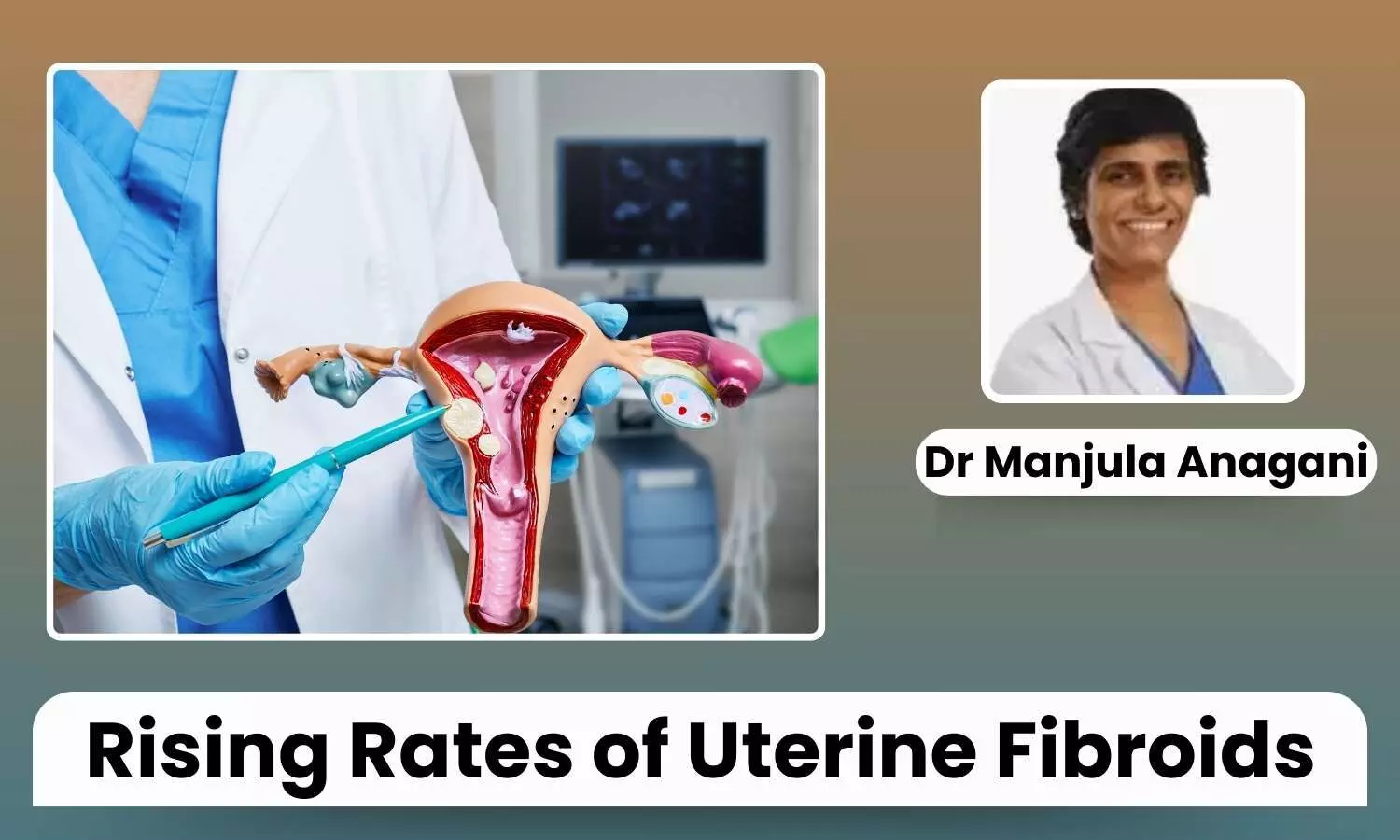Rising Rates of Uterine Fibroids and How They Affect Women's Health - Dr Manjula Anagani

In recent years, uterine fibroids have become a burgeoning concern among women worldwide. Often dismissed as benign growths in the uterus, fibroids are now recognized as a significant health challenge because of their expanding prevalence and their profound impact on women’s physical, emotional, and reproductive well-being.
Despite advancements in medical science, awareness about uterine fibroids remains alarmingly inadequate, leading to delayed diagnosis and treatment
What are Uterine Fibroids?
Uterine fibroids, or leiomyomas, are non-cancerous tumours that form in or on the uterus. These growths vary in size—from microscopic to huge masses that can distort the uterus—and can develop in different positions, within the uterine wall, on its surface, or connected by a stalk.
The exact cause of fibroids is unclear, but hormonal imbalances, genetic factors, and lifestyle elements such as diet and stress are believed to play substantial roles in their evolution.
Rising Incidence of Fibroids in Women
Global figures suggest that up to 70-80% of women will develop fibroids by the age of 50, with a notable surge in diagnoses among younger women in the last decade. India is no exception to this trend, with urban lifestyles, postponed childbearing, and dietary changes adding to the increase.
Many women remain asymptomatic, but for others, fibroids can cause debilitating symptoms, interrupting their daily lives and overall well-being.
Impact on Women’s Health
1. Physical Health
The symptoms of uterine fibroids can range from heavy menstrual bleeding, prolonged periods, and pelvic pain to frequent urination and constipation. Severe anemia due to chronic blood loss is a common complication, leading to fatigue and reduced productivity.
In some cases, huge fibroids can exert pressure on adjacent organs, causing discomfort and functional impairments.
2. Reproductive Health
Fibroids can cause infertility and complicate pregnancies in various ways. Depending on where they are located and their dimensions, they may block fallopian tubes, interfere with embryo implantation, or result in miscarriages.
During pregnancy, fibroids increase the risks of early labour, Placental abruption, and C-sections, so managing them is crucial for women wanting to conceive.
3. Emotional and Psychological Impact
The chronic agony and bleeding associated with fibroids can take a toll on mental health. Women often feel frustration, anxiety, and depression, particularly when their symptoms are dismissed or misunderstood by family or healthcare providers.
Issues surrounding reproductive health further exacerbate the emotional burden due to stigma.
Importance of Early Diagnosis
Early detection of fibroids is crucial for effective management. Unfortunately, many women delay seeking medical advice, either due to lack of awareness or societal taboos surrounding menstrual health.
Regular gynaecological check-ups, combined with imaging techniques like ultrasounds and MRIs, can help identify fibroids in their early stages, enabling timely intervention.
Treatment Options
Management of uterine fibroids depends on factors such as the size, location, and number of fibroids, as well as the patient’s age, symptoms, and desire for future pregnancies.
Treatment options range from medical management with hormonal therapies to surgical interventions like myomectomy and hysterectomy. Recent advancements in minimally invasive and robotic-assisted surgeries have revolutionized fibroid treatment, offering women quicker recovery times and improved outcomes.
Non-Surgical Innovations: For women seeking alternatives to surgery, options like uterine artery embolization and high-intensity focused ultrasound (HIFU) provide targeted treatment with minimal downtime. These approaches are particularly beneficial for women who wish to preserve their uterus.
Ablation Techniques: Endometrial ablation is a minimally invasive procedure used to treat fibroids by destroying the uterine lining (endometrium). Techniques such as radio frequency ablation, cryoablation, or microwave ablation effectively reduce fibroid-related symptoms like heavy menstrual bleeding.
These methods are suitable for women who do not wish to conceive in the future and prefer a quick recovery over traditional surgical methods.
Prevention and Lifestyle Modifications
While some risk factors for fibroids, such as genetics, cannot be modified, adopting a healthy lifestyle can play a preventive role. A balanced diet rich in fruits, vegetables, and whole grains, coupled with regular exercise, can help maintain hormonal balance.
Managing stress through mindfulness practices and ensuring adequate sleep are equally important.
Empowering Women Through Education
Raising awareness about uterine fibroids is imperative to break the cycle of delayed diagnosis and inadequate treatment. Educational campaigns, community programs, and workplace initiatives can empower women to prioritize their reproductive health.
Open conversations about menstrual and gynaecological health in families and schools can help dismantle the stigma that often prevents women from seeking timely care.
Role of Healthcare Providers
As healthcare providers, it is our responsibility to ensure that women receive comprehensive care for uterine fibroids. This includes providing accurate information, offering individualized treatment plans, and addressing the emotional aspects of living with fibroids.
Leveraging the latest medical technologies and adopting a patient-centric approach can deliver holistic care to those affected.
Conclusion
The rising rates of uterine fibroids represent a hidden epidemic that demands urgent attention. By fostering awareness, encouraging early diagnosis, and embracing advancements in medical science, we can significantly improve the quality of life for women affected by this condition.
Together, let us prioritize women’s health and work towards a future where no woman has to suffer silently from uterine fibroids.


